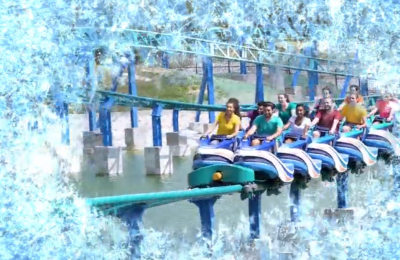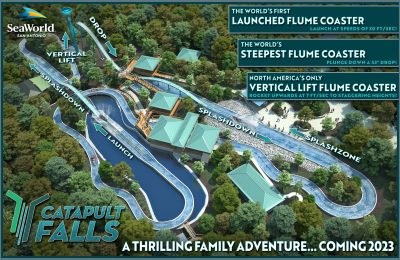On February 18th, 16 people entered SeaWorld San Diego not knowing that they would be leaving in rescue harnesses. On the same day, women and children at the San Diego Zoo Safari Park were tossed around as their hot air balloon ride swayed in a powerful breeze.
Theme parks are filled with attractions that can be affected by weather, but very few are as sensitive to wind as gondola and balloon attractions. The Bayside Skyride is a 80-foot tall 1967 VonRoll Sky Gondola. When the Skyride opened, it took park guests to and from the Atlantis Restaurant. The restaurant eventually turned into the Hubbs-SeaWorld Research Institute, and the Skyride became a round-trip.
The Safari Park Balloon Ride takes guests up 400 feet in the air, and is tethered to the ground. The ride was installed in 2015 and is filled with helium, not hot air. Both attractions come at an additional charge with the Balloon Ride at $18 for adults and the Bayside Skyride at $5.
Due to the dangers of operating sensitive rides during periods of high wind, rides usually close when wind reaches a certain speed. However, Southern California has been experiencing a period of wet and windy weather, and the wind forecasts were substantially off. Weather sites predicted wind speeds of around 25 mph, but actual gusts were measured around 60 mph.
According to the San Diego Fire-Rescue Department, a strong gust of wind caused the circuit breaker of the ride to trip, which stranded five gondolas above Mission Bay. Crews had to individually rescue the riders over the next few hours. In the case of the Balloon Ride, zoo workers were able to gain control of the balloon and bring it to safety. Thankfully, no one was hurt in both incidents.
The Bayside Skyride has been closed since Monday as it is inspected by multiple agencies including SeaWorld contractors and Cal-OSHA. The Balloon Ride seems to have re-opened as there is no indication from the park’s website.
Although the Bayside Skyride incident has attracted nationwide publicity, the ride system didn’t experience any physical malfunctions. The reason why the circuit breaker could not be restarted remains to be answered.
Incidents like this are tough for parks because it is hard to convey to the general public that a ride is safe when guests who experienced the unfortunate event truly believed that they were in danger. In addition, media sensationalism favors stories that exaggerate details. Since the media narrative for situations like this are almost always negative, I guess that you could say these are no-win(d) situations.
Stay tuned for more from SeaWorld, and be sure to get social with us on Facebook and follow along with us on Twitter @BehindThrills for the latest updates!
For our latest theme park videos please be sure to subscribe to us on YouTube!




